Satsang in Nepal: July 2023 | Mohanji
The significance of self-acceptance in life
I would like you to remember a couple of things from what I teach in the world. The key message to the world is: this is the Raja Yoga path, the royal path, the path of liberation. It’s the path of dissolution because you become the ocean: you dissolve and become supreme consciousness. In this path, the key or main thing is self-acceptance.
(In Hindi): Apne aapko maanna, respect karna.
Translation: Accepting and respecting yourself.
Love, respect, and acceptance – this is fundamental. If you fight with yourself, you cannot meet God because you are busy fighting yourself. Please remember one thing; all of us have imperfections. I don’t know many things in life; I’m sure most of you are like that. We don’t know all the things of creation. We don’t know all the things in life. This is okay; we don’t have to know, but whatever we are, however we are, if we don’t accept ourselves in that condition, we cannot accept the world.
We cannot accept the world if we cannot accept ourselves. The fundamental teaching of the path of liberation (Raja Yoga) is self-acceptance. You should look at yourself and not worry about what you don’t have or your deficiencies. All of us have them; we all have deficiencies.
We never ever think we are complete. Why do we feel all the time that we’re incomplete? Because we compare – compare with another person. Another person is another person; it’s not us. They have to be different. That’s why we have eight billion people in the world. All are different people – different types of people with different constitutions, energy patterns, and frequencies. This is how life should be.
All the plants, seeds, trees and everything you take are all different. That’s how it should be. If you start walking with self-acceptance as the first step, it’s guaranteed that one lifetime is enough to meet Shiva, to be one with Shiva.
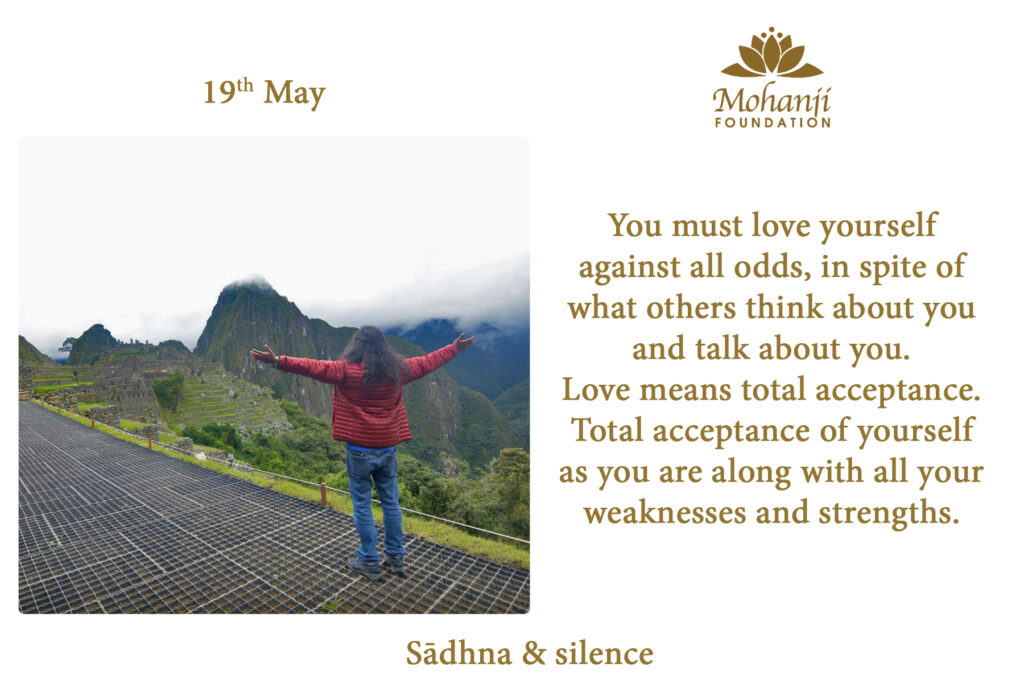
Now imagine you don’t accept yourself. What’ll happen? Your whole lifetime will be wasted fighting over this: in conflict. The conflict isn’t from outside. Don’t think about whether people hate you etc.; that doesn’t matter. People love you or hate you; no problem. It doesn’t matter, but if you hate yourself, you lose a lifetime. You cannot hate yourself, you see? Do you understand what I’m saying? Are you with me?
If you hate yourself, (in Hindi) agar aap khud se nafrath kar rahe hain, toh poori zindagi aisi bekaar ho jayegi.
Translation: If you hate yourself, your whole life will be a waste.
Hating yourself is very detrimental. Start accepting whatever your conditions are. “Okay, this is my situation; this is what I am.” You may not be the best in your own eyes. That’s not a problem; you don’t have to be the best; there’s no need. You are what you are, and that’s your presentation to the world. What you are and how you are; this is your gift to the world, and not as another person.
There are probably different people whom you want to be like, but they are already taken. They’re already born, have a body, and are expressing life. You don’t have to be them. You cannot be them, and neither can they be you. You’re unique, and your expression to the world is your uniqueness. This is what the world needs and is looking for today. So, don’t ever feel, “I must change so the world will accept me”. The world will not accept you like that. Believe me, it’s one hundred per cent true.
Many people struggle their whole life to change, and what happens? Death happens.
(In Hindi) Mar jaate hain.
Translation: They die.
Will change happen like that? The change will not happen because you are already yourself. So, the only choice you have is self-acceptance, accepting yourself. From there, you can take a step. That’s the fundamental teaching of the Raja Yoga path – the path of liberation.
Awareness and stability
The second point is awareness. What’s awareness? Be aware; first and foremost be aware that you’ve taken birth.
(In Hindi): Abhi aap zinda hain, paidaa hue hain, zinda hain.
Translation: You’re alive now; you’re in a body; you’ve taken birth.
That’s the beginning: ‘I’m alive’. This is the biggest gift you have. Life is the biggest gift, not your emotions and other things, not even your experiences. But you are alive today and not as somebody, simply that you are alive. What we normally say is, “Oh, this is Mohanji; this is Sai Baba; this is that” – we’re only looking at forms, and we say that’s that. No! Before all that, the main and most important thing is that ‘You’ are alive!’ You’re alive today. That’s the core matter.
This is where you can draw your picture. You can carve your life or pave your path. You can meet the highest because.. (in Hindi) Aap zinda hain. (Translation: You’re alive.)
Are you with me? That’s the fundamental awareness. What’s the fundamental awareness? That you’re living; your heart is beating. You have all the potential of life. The highest potential of life is life, you see? Not what you’ve achieved on the earth. You may have money, qualifications, or power; that’s all secondary. Fundamentally, you’re alive. (In Hindi: Aap zinda hain.) This awareness is enough for you to be stable.
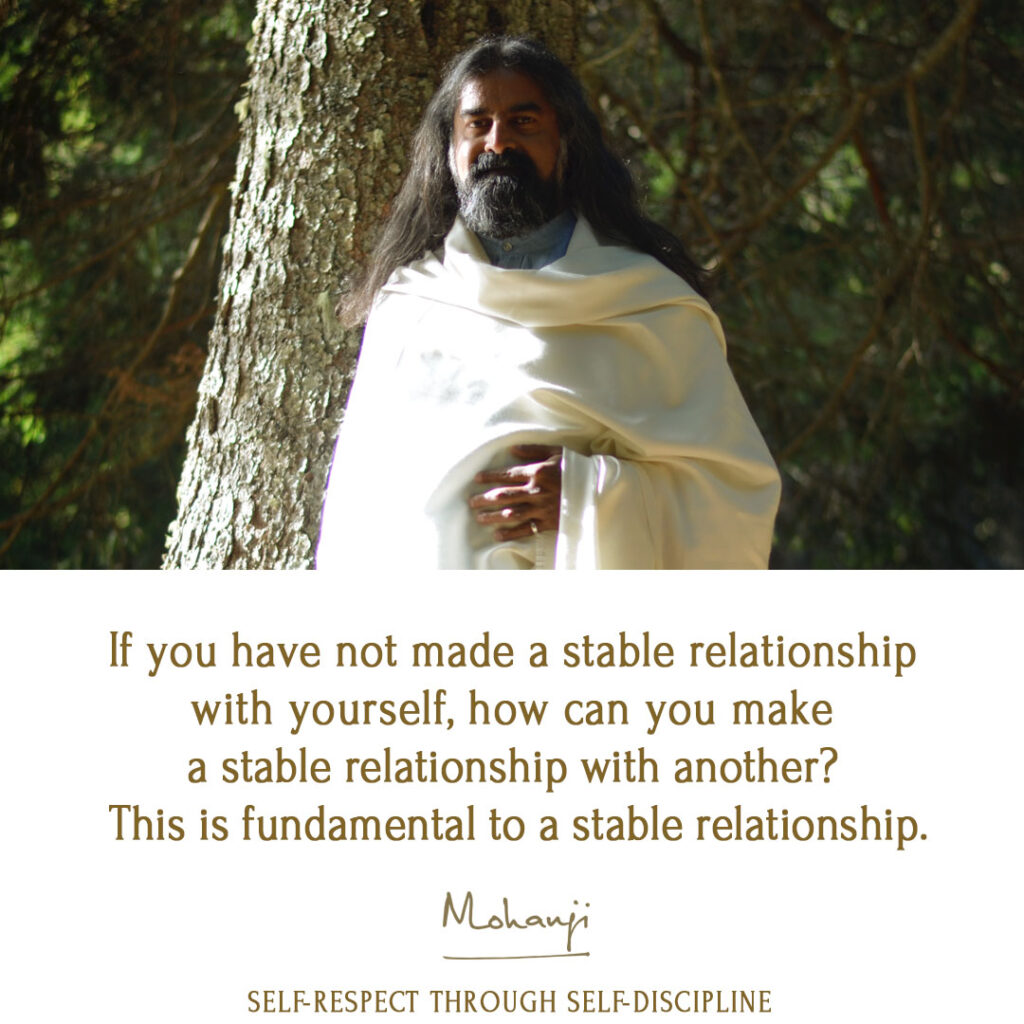
What’s the biggest thing you need in life? Stability. What’s stability? You’re stable all the time; nobody can shake you. Maybe there are things happening in the world, good or bad, but nobody can shake you if you’re stable. Otherwise, everybody can make you jump like a monkey, isn’t it? Society brings situations; various situations happen in life all the time. If we’re unstable, we’ll be just like a monkey jumping from branch to branch, still not satisfied.
(In Hindi): Satisfaction nahi hota hai. Kyon? Stability nahi hai.
Translation: There’s no satisfaction. Why? Because there’s no stability.
Stability is fundamental. How can you be stable? Acceptance.
(In Hindi): Kisko? Kisko accept karna hai? Apne aap ko. Doosre ko accept karna aasaan hai. Magar usse kaam nahi hoga.
Translation: Who do you need to accept? Yourself. Accepting somebody else is easy, but that’ll not do the job.
If that person shifts, you’ll also suffer. Are you with me? If you put all your acceptance on other people, then if they move, you move too. Your stability gets affected. That’s not the Raja Yoga path; that’s not our path. If you’re with me, this is very simple and also very difficult. Why is it difficult? Because the most difficult thing in life is to accept ourselves. We can accept anybody outside, but try accepting yourself fully, with all your weaknesses and strengths. Do you think this is easy?
(In Hindi): Bahut mushkil hai apne aapko maanna. Apne aap ko sweekar karna bahut mushkil hai. Isi liye yeh path, yeh tradition, mushkil hai. Toh zindagi mein aage kya karna hai? Abhi subah uth ke kya karna hai? Apne aapko sweekar karne ki koshish karni hai.
Translation: It’s very difficult to accept oneself, and that’s why this path, this tradition is difficult. So, what do you need to do further in life? What do you have to do after waking up in the morning? Try to work on self-acceptance.
What do you have to do when you wake up in the morning? Accept yourself; at least try. Try accepting yourself. You have weaknesses, desires, feelings, inclinations, tendencies, vices, and strengths; you have everything. Whatever is there in the world, you have that, right? With all this, you say, “Okay, I’m fine.” Then life will go on, but you’ll be stable. Storms will come and go. Which is the tree that survives storms?
(In Hindi): Kaun sa ped toofan ko jhelta hai? (Translation: Which tree can withstand storms?) The one that’s flexible. The tree, which is flexible, survives storms. You should be like a flexible tree – flexibility.
Acceptance, awareness, and flexibility – these are the fundamentals of the path of Raja Yoga. Nobody can shake you. Storms will come and go; you’ll survive. You’ll be stable. You have the right to be stable. You have the right to be you. That’s why my core of teaching is ‘Be you’.

Acceptance, awareness, and flexibility – these are the fundamentals of the path of Raja Yoga.
– Mohanji
(In Hindi): Vastavik bane rehna. Ye bahut shaktishaali bhaav hai.
Translation: Be yourself. This is a very powerful emotion.
‘Be you; be yourself.’ Don’t try to be somebody else. That’s already taken; they’re already somebody else. You can take good qualities from other people; that’s all fine. I’m not talking about that. You know I’m not talking about ignoring others’ goodness. Do accept others’ goodness. Do accept everybody. Are you with me?
(In Hindi): Yeh samajh rahe hain na aap?
Translation: Do you understand this?
(In Hindi): Abhi questions. Yeh introduction tha.
Translation: Questions now. This was an introduction.
Guidance for self-acceptance
Question: (In Hindi) Main Sivananda Ashram, Rishikesh se belong karti hoon. Aaj tak jitna bhi maine practise kiya hai, usme highest hoon. Aisa kuch nahin hai ki mujhko highest ko attain karna hai. Toh jo aap bataa rahe hain, jo cheez highest ko attain karna hai, toh humse aur bada highest kya hai? Ek woh prashna raha. Doosra aap baarambaar bataa rahe the ki khud ko pehchaanna, khud ko accept kar lena. Accept toh karna chaahte hain sab log, par kaise? Uska kuch technique hona chaahiye.
Translation: I belong to Sivananda Ashram, Rishikesh, where I’m at the highest level in practice. It’s not that I’ve to attain the highest. My first question is: what’s the highest one can go? What’s highest beyond us? My second question is: You’ve emphasised the importance of self-acceptance. We would all like to attain that, but how? There needs to be a technique for that.
Mohanji: What’s higher than us? That’s the first question. Am I right? What’s higher than us? What’s the most subtle?
What’s life? The combining or marrying of two things is what we call life. One is the gross (Hindi: sthoola); the physical body, mind (Hindi: mann), intellect, and ego all put together is the gross. Then we have the sookshma. What is sookshma? Sookshma is the energy which is activating the physical. When sthoola and sookshma combine, we call it life. When sookshma activates the sthoola, who is more powerful? Sookshma, right? When sookshma leaves the body, we call it death. When sookshma and sthoola, i.e. gross and subtle, join together, we call it life. When they separate, we call it death.
So, in this context, what maintains your life is the sookshma. Are you with me?
(In Hindi): Clear na? Samajh rahe hain aap? Aur question hai to baad mein poochhna, agar ye maine explain nahi kiya toh. Hamaari zindagi mein kiska control hai? Hamare sookshma ka.
Translation: Is it clear? Are you following this? If there are further questions, ask me later if I haven’t explained this. What’s that which controls your life? It’s the sookshma or the subtle within.
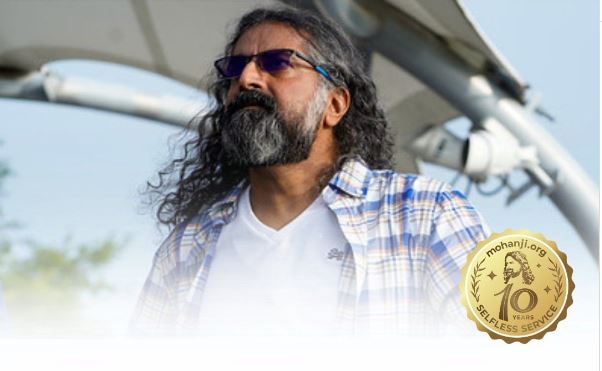
Recognising the energy within is the only step human beings need to take. That’s like a constant awareness that starts with self-acceptance when you stop having conflict with yourself.
– Mohanji
Your whole life is controlled, stabilised or activated by the subtle. The same subtle activates the entire universe – all the planets and the galaxies. So, who’s the real boss? That’s the real boss, and what’s the shape and the form of the real boss? Brighter than (Sanskrit) divya surya-sahasrasya. Brighter than a million suns – pure brightness; intelligent brightness.
That’s sustaining the entire universe and also sustaining our bodies. That’s the highest awareness of human existence. Our only job is to move our awareness from the physical (which is body, mind, intellect, and ego) to the subtle (which is sookshma), the energy part. We can call it soul, or we can call it shakti or whatever you want to call it, but it’s energy. Why I’m saying ‘energy’ is because everybody can understand that, and then we realise the same energy goes through all the birds, animals and plants everywhere. That sustains the entire universe.
Recognising the energy within is the only step human beings need to take. That’s like a constant awareness that starts with self-acceptance when you stop having conflict with yourself. It’s not like learning something; it’s being aware. There can be many techniques or activities you can learn, but to know what’s running the show, what’s needed is silence, observation, and manana (contemplation), and it automatically leads to dhyana.
What’s dhyana? You’re melting your mind in the consciousness, in the energy. That’s dhyana, a state where you are still.
(In Hindi): Woh apne aap aa jaata hai; dhyaan kar nahi sakte.
Translation: It happens by itself; it cannot be ‘done’.
It means that you can’t do meditation; meditation becomes you. You can ‘be meditation’.
How to be in acceptance? In our education system, and right from childhood, people compare us with other people. Even in the family, everybody says, “Ah, you aren’t like the other, or you should compete with the other.” In schools, they say you should score more than the others.
We’re always tuned or programmed to compete. That’s the first and fundamental thing we should stop. When you stop comparing, you automatically start accepting yourself. If you want to become somebody else, you can never accept. If you imitate, you cannot accept. If you’re completely content the way you are then…
(In Hindi): Theek hai, sab log apna apna kaam kar rahe hain. Main bhi apna kaam kar raha hoon.
Translation: Okay, everyone’s doing their work, and so am I.
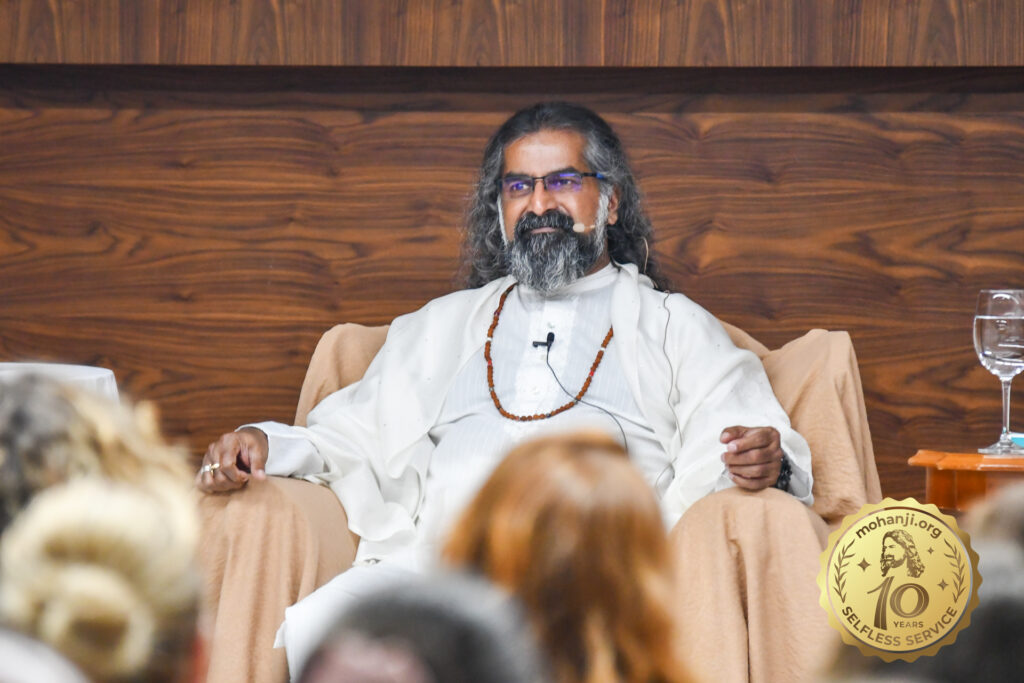
We’re always tuned or programmed to compete. That’s the first and fundamental thing we should stop. When you stop comparing, you automatically start accepting yourself.
– Mohanji
Do that with acceptance or with no comparison, competition, or imitation. First, you detach yourself from imitation and competition. That’s like a constant awareness: ‘I’m not somebody else, nor do I have to be somebody.’ As I said earlier, if you want to attain some goal or something that’s different, that’s creating a purpose. Sometimes you want to achieve something in life. Everybody has a different level of achievement. After a while, even that interest will go – to achieve something.
You won’t want to achieve anything because this comes automatically. As your frequency shifts, you automatically start achieving, and when you keep your mind in front and in analysis (analysing, comparing, and competing), then you’re in conflict all the time; you’re never satisfied. Fundamentally, we can understand that we’ve stopped comparing when we start accepting and also start having more satisfaction with life. You know, peace and satisfaction are signs that we’ve started accepting.
To start with, change your programming. The programming is to compare with, compete with, and imitate other people. That’s what society pushes you: ‘Please do it.’
Comment from another person in audience: (In Hindi): Jab aap apne aap ko maan lete ho ki main har ek jeev mein hoon, ishwariya tattva hoon, usee mein hi aap rehte ho, aap aware ho jaate ho, toh doosri awareness toh God ho jayenge na sab log, mann ka hi toh khel hoga.
Translation: When you believe that you aren’t different from other beings and are essentially the Ishwara tattva or principle, then the rest is a play of the mind.
Mohanji: (In Hindi): Dekhiye, woh vishwas hai. Kisi ne bola hai. Zindagi mein 2-3 tareeke ki understanding hoti hai.
Pehle ko kehte hain Shrutabuddhi – hamaara intellect. Doosre logon se, ya education system se, ya parents se, ya religion se hum bahut kuch information collect karte hain. Hum iske saath toh paida nahi hue the. Hamaari buddhi 80% aisi Shrutabuddhi hai – matlab doosron se jo mila hai. Is information ko hamne abhi tak experience nahi kiya hai. Agar experience kiya hai toh kya hoga? Mann dissolve ho jayega; mann hoga bhi nahi.
Doosre ko kehte hain Yuktabuddhi. Yukti – logic. Jaise aag mein haath daala toh haath jal jayega.
Translation: See, that’s belief in what someone said. There are two or three types of understanding in life. The first one is called Shrutabuddhi or intellect, which works on information collected from sources such as other people, the education system, parents, religion, etc. We weren’t born with such information. About 80% of our intellect consists of Shrutabuddhi – that which is sourced from outside of us. We haven’t experienced this information. What happens if we experience it? The mind will dissolve and remain no more.
The other is Yuktabuddhi, which comes from logical inference – like we know that if we put our hand in the fire, it’ll get burned. Your hand will burn if you put it in the fire. How did we know? We can understand through experience, not just directly but even indirectly; we understand through the logical mind.
(In Hindi): Yeh dono hamaare saath hain hamesha. Zyaadaatar hum Shrutabuddhi use karte hain.Yuktabuddhi kam use karte hain.
Translation: We always have these two types of buddhi. We mostly use Shrutabuddhi; we use less of Yuktabuddhi.
It means we’re using more knowledge we’ve collected from society, religion, teachers, and parents – from everywhere. That’s what we consider as ‘ourselves’; that’s belief. Understand the difference here. Belief means: “I believe so because my teacher, Guru, my religion, my parents, or politicians said so.” We’ve collected this, and we believe it. Yuktabuddhi is that logically, we start analysing.
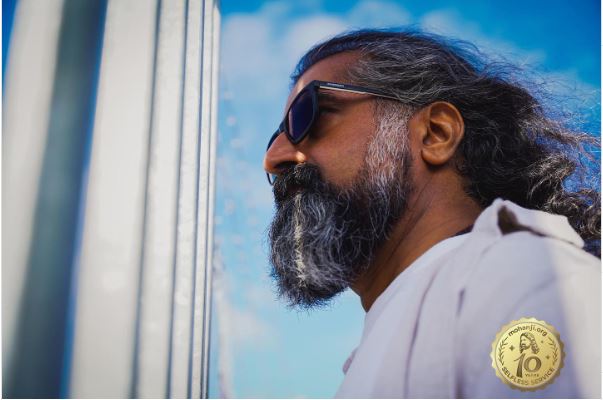
We always have these two types of buddhi. We mostly use Shrutabuddhi (knowledge collected from outside); we use less of Yuktabuddhi (knowledge from logical inference).
– Mohanji
(In Hindi): “Yeh theek ho sakta hai ki nahi? Okay, yeh theek ho sakta hai kyon ki bade Guru logon ne aisa bola hai, toh ye aisa ho sakta hai.”
Translation: We wonder whether something sounds reasonable or possible. If the respected Gurus say it is, then we go by that.
The third is the experience part; that path is awareness. You should be aware that whatever you’ve collected within you, you’ve to transform that knowledge to experience. That’s the main thing here. Experience makes you a master. Knowledge always keeps you a student. When you collect all these things, you’ve knowledge. No problem, but until it becomes an experience, you aren’t a master. I’m talking about the experience part.
You cannot understand the universe and energy if you don’t understand yourself. To understand means to experience yourself. How do you know if the universal energy exists? When you become aware and start experiencing that, there’s energy sitting inside.
(In Hindi): Jab aapko ye aisa mehsoos ho raha hai, matlab, you’re experiencing it, not just knowing about it. Sab Guru jano ne bola hai ki ye sookshma aur sthoola ka milan hai zindagi. Theek hai. Magar woh hamaara experience nahi hai na? Hamaara experience kya hai? Hum personality hain.
Translation: When you’re experiencing, not just knowing about it – all the Gurus have said that life is a marriage of sookshma and sthoola. Okay, but that isn’t our experience. What’s our experience? We’re the personality.
Am I right? What do we experience? Our personality. When you go out into the street, you don’t say, “I’m sookshma and sthoola together”. You say,”I’m so and so”. Isn’t it? That’s knowledge or belief; Personality is belief. But what’s ‘truth’? Truth is experience; truth is always experience. Experience makes you a master.
(In Hindi): Jo aapne padha hai, agar woh zindagi mein experience ho gaya toh aap master ho gaye.
Translation: If you experience what you’ve read in the books, then you become a master.
That awareness of the energy inside is what we call enlightenment or self-realisation. What’s self-realisation? The self is already here.
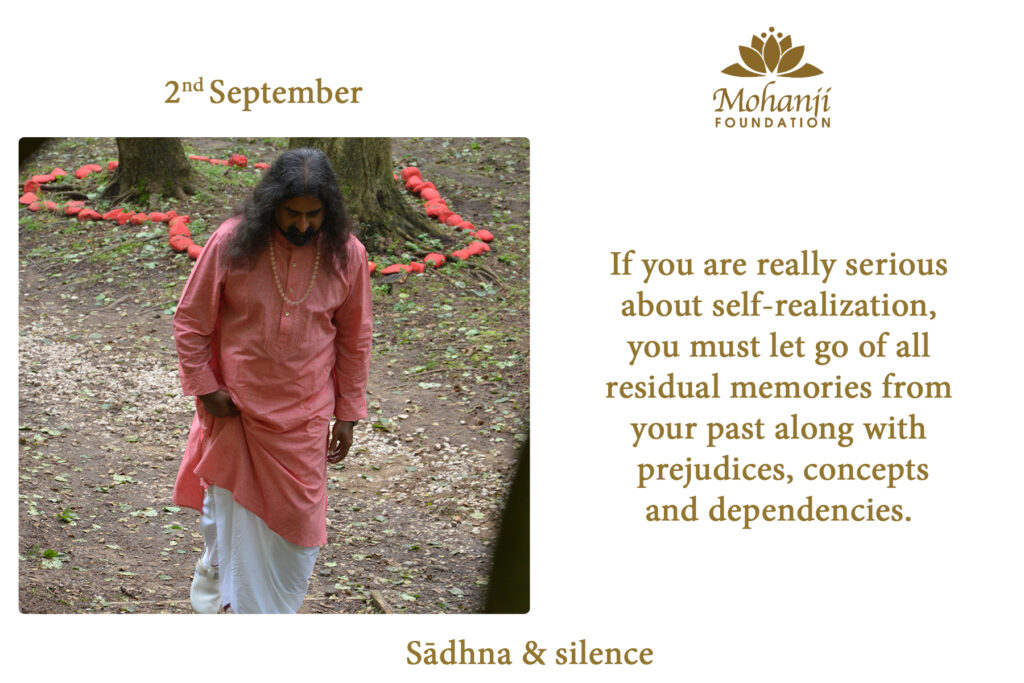
(In Hindi): Uska realisation ho jaata hai. Uska experience ban jaata hai.
Translation: The self’s realisation just happens. It becomes an experience.
When what we understand becomes our experience, then we’re enlightened. Then it’s stable.
(In Hindi): Woh chala jaata nahi hai. Woh waisa hi rahega.
Translation: It doesn’t go away; it stays as is.
Then next is when we realise that everything is me; all things are me. The same that sits in here sits in them. Then you don’t have separation. When you don’t have separation, you understand God; that’s God-realisation.
(In Hindi): Poora path bataaya na? Aisa hi hota hai.
Translation: I’ve told you the whole path, isn’t it? That’s how it is.
So, knowing is nothing. You can read thousands of books. That’s why when a student went to Rumi and asked, “What should I do?” Rumi told him to throw his books in the river and come back. Outside knowledge is a trap. We are filled with knowledge sometimes, but what happens eventually is that we are stuck with knowledge.
Even the kundalini experience; the kundalini – how many thousands of books about it! When people have the experience, they say:
(In Hindi): “Yeh experience nahi tha book mein, toh yeh theek nahi hai.” Apna experience apna hi hai.
Translation: “The books do not mention the type of experience I had, so my experience mustn’t be real.” Our experience is unique and ours alone.
Nobody else can tell you. You are a constitution, a complete universe. Your experience is yours. Nobody else can say, “this is right or wrong; this is true for you.” Another person’s experience is another person’s experience, and that is true for them. How can we say this is right and that’s wrong? This is only at the mind’s level. At the consciousness level, nothing is right, and nothing is wrong. That’s how it is. The good, the bad and the ugly have the same energy inside – isn’t it?
Watch the satsang here.
Read part 2 here.
Transcribed by Sandra Sankar and Geeta Iyer
Proofread by Geeta Iyer
Hindi parts translated by Geeta Iyer

